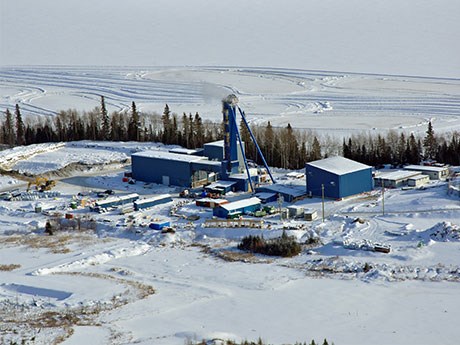A report on the opportunities and challenges relating to the further development of the mining industry in northwestern Ontario estimates that nine mature mining projects with the potential to become producing mines within the next five years will generate $135 billion in revenue from metal sales.
Mining in Northwestern Ontario: Opportunities and Challenges was commissioned by Ambassador’s Northwest with the support of the City of Thunder Bay Community Economic Development Commission, Thunder Bay Ventures, the city’s chamber of commerce, the Northwestern Ontario Municipal Association and Thunder Bay’s two post secondary institutions, Lakehead University and Confederation College.
The nine projects include the Bending Lake Iron project, Cliffs Natural Resources’ Black Thor chromite project, Goldcorp’s Bruce Channel and Cochenour projects in Red Lake, Osisko’s Hammond Reef gold project, Noront Resources’ Eagle’s Nest project, Rainy River Resources’ Rainy River project, Rubicon Minerals’ Phoenix gold project, Stillwater’s Marathon copper-PGE project and Treasury Metals’ Goliath gold project.
According to the report, development of the nine projects will create close to 24,000 direct and indirect jobs, including 8,107 from construction and 15,481 from mining operations over an average mine life of approximately 17.5 years.
Tax revenue for the three levels of government over the same period of time would total an estimated $16 billion.
The three major challenges the authors identified are Aboriginal participation, labour shortages and inadequate infrastructure.
The study recommends “flexible, innovative and collaborative long-term solutions” to enhance the involvement of Aboriginal people and urges government and industry to foster community development, education and training, business opportunities, revenue sharing and “full partnerships.” To counter the labour shortage, the study recommends recruiting underrepresented groups in the mining industry, including Aboriginals and women, promoting mining careers in schools and creating an industry-wide branding and communication strategy.
Capital costs for the construction of required transportation, energy and communication infrastructure to support the development of the nine projects will total $1.739 billion.
According to the report, “a major constraint in operating the nine mining projects is the requirement for over 500 megawatts of electrical power.”
The report points out that “various industry stakeholders have suggested that surplus power capacity in excess of 500 megawatts exists within the current generating stations in Thunder Bay and Atikokan” and notes that both stations would have to run at full capacity to meet the needs of the mining industry. www.thunderbay.ca/cedc.htm


